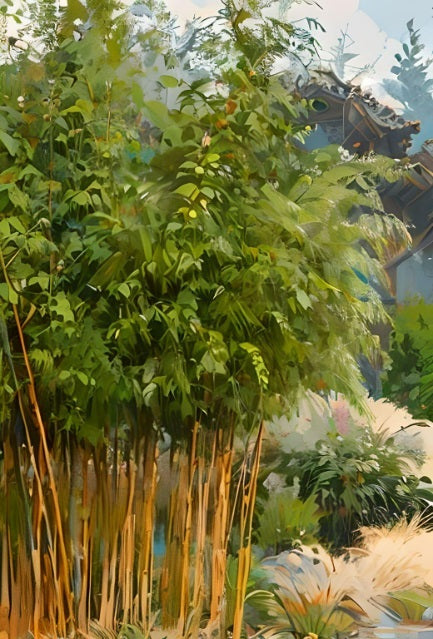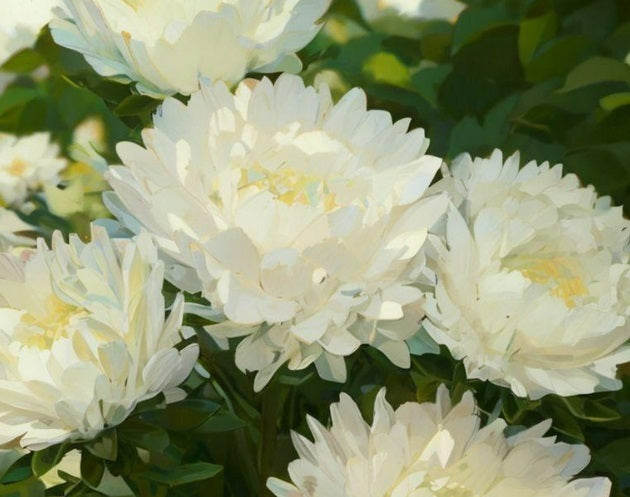How Fast Does Bamboo Grow?
How Does Bamboo Grow?
Each growing season, typically Spring through Summer, the emerging bamboo culms gain incremental height and width. The older culms from the prior season are replaced by taller, thicker culms. Older culms eventually die back to make room for each new cycle of culms.
This process continues during subsequent growing seasons, with each year’s culms growing taller and wider than the prior year’s growth.
When the bamboo reaches maturity, most newly emerging culms will subsequently emerge and develop during each subsequent growing season to a similar height and width that is characteristic for that bamboo at maturity.
Once a bamboo reaches maturity, individual culms remain alive and functional until eventually dying back naturally typically within 5-7 years, constantly replenished and replaced by new culms that emerge and reach mature height and thickness each growing season. Bamboo maintenance requires yearly culling, pruning, and removal of dead or dying culms, leaves, and branches to keep the bamboo healthy, preserve its characteristic appearance in the landscape, and ensure vigorous growth of new culms unobstructed by a tangled layer of dead or dying vegetation.
The total lifespan of bamboo varies among species and varieties, depending on its genetic vigor and its growth, development, and flowering traits and characteristics, and on environmental factors.
Growth Habits of Clumping Bamboo
Clumping varieties will continue to produce new culms in a self-limiting clump, typically within 5-6 feet of the original mother plant. Sections of the original clump can be carefully separated at the root from the mother plant early in each growing season and planted elsewhere in the landscape, where they will continue to grow during that season to the same general height and culm thickness as the culms of the mother plant. This is a cost efficient method to grow a lengthy hedge or privacy screen over time, with each new transplant obtained from an original plant displaying the same height, width, and general appearance of the mature plant already in the ground.
Running Bamboo Growth Characteristics
Uncontained running bamboo will constantly replenish itself throughout its lifetime via an ever-expanding underground network of rhizome. Individual rhizomes can be dug up and carefully cut from the main root to help contain the expansion of the bamboo, and to replant elsewhere in the landscape. Transplanted rhizomes will produce culms that eventually emerge and develop during the subsequent growing season to a similar height and culm thickness as the mother plant.
A contained running bamboo will continue to develop rhizomes which if left unmanaged will eventually overcrowd the containment area. Regularly prune rhizomes back to within the desired plant circumference that supports healthy plant growth with sufficient soil, oxygen, and moisture. Regularly remove dead or dying culms, branches, and leaves to keep the bamboo plant base uncluttered and open to sufficient and balanced air circulation, light, and moisture.
Bamboo Seedling Growth
When growing bamboo seedlings from seed, you’ll find that the initial growth of a cultivated seedling occurs in a sequence of more accelerated phases, with increasingly taller, thicker culms and bigger leaves emerging and developing every couple of months during the young plant’s first year. As the new culms emerge and develop, the prior growth stops growing, begins to fade, and eventually dies altogether to make way for the new.
It’s not uncommon to see three or four phases of increasingly taller, thicker culms emerge and grow in young nursery bamboo plants during their first year of growth. Once placed in the ground, the bamboo plants eventually acclimate in the 2nd year and beyond to a typical single phase of sequential emergence and growth of culms during each growing season.
As the plant matures over time, there typically emerges taller and thicker growth each year, until the bamboo plant reaches its genetically and environmentally determined maximum size at maturity. Then all subsequent emerging growth achieves and maintains general height and culm diameter considered characteristic for that species.
Growing Bamboo
There are many different genetic and environmental factors that influence a plant’s growth over time and its ultimate size and appearance at maturity. Every plant’s anticipated growth traits and characteristics are generally recognized and accepted estimates based on the assumption of optimal inherited genes from the mother plant and optimal environmental conditions throughout its lifetime.
It’s helpful to understand that while we generally can expect certain processes to occur during a plant’s growth, any variation can alter an expected trajectory and ultimately impede, accelerate, or sometimes end growth. In the end Nature will always take its due course, and at the speed and with the final outcome it dictates.
Collections
-

All Bamboo Seeds for Sale
Welcome to our catalog of bamboo plant seeds for sale including clumping...
-

All Ornamental Grass Seeds
Grass has finally come into its own as a garden landscape centerpiece....
-

All Flower Seeds
Thoughtfully curated flowers, plants and bushes that beautifully complement your bamboo garden...



